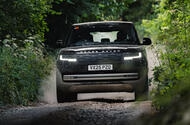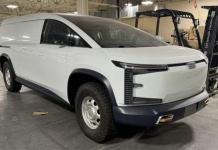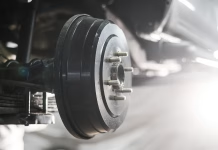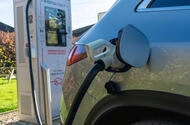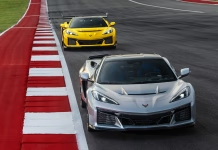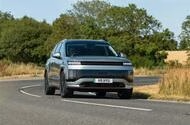What Really Happens When a Plane Loses Cabin Pressure
Mercedes CLA Shooting Brake Unveiled as Brand’s First Electric Wagon with More Space and...
 A roomier version of the CLA Coupé, the Shooting Brake arrives first as an EV, with a hybrid to follow
A roomier version of the CLA Coupé, the Shooting Brake arrives first as an EV, with a hybrid to follow
Mercedes-Benz has officially revealed its first electric wagon: the CLA Shooting Brake.
A variant of the German brand’s long-legged EV unveiled in March, the shooting brake is positioned as a roomier and bigger-booted alternative to the standard coupé.
The new, second-generation CLA Shooting Brake is also bigger than the car it replaces. Compared with the first-generation model, it is 35mm longer (at 4723mm) and 27mm taller (1469mm), with its wheelbase stretched by 61mm (2790mm).
As a result, rear head room increases by 7mm (and 26mm more than in the new coupé) and by 14mm in the front. Leg room also improves by 11mm in each row.
Boot space is 455 litres, which is 50 litres more than in the new coupé but 30 litres down on the previous-generation car. However, the addition of a 101-litre frunk – the new CLA models are the first modern Mercedes cars to offer it – means overall luggage space is up 71 litres. When all rear seats are folded, overall luggage space ramps up to 1290 litres.
Underneath, it’s the same set-up as the CLA Coupé, which draws electricity from an 85kWh battery for 473 miles of range – 19 miles less than the more slippery coupé. It's available in 268bhp entry-level 250+ and 349bhp dual-motor 350 forms. Towing capability is rated at 1800kg in four-wheel-drive guise. As with the standard car, a 1.5-litre hybrid variant will arrive next year.
Inside, the Shooting Brake also mirrors the CLA Coupé, with a technology-centred cabin that features a 10.25in driver’s display paired with a 14in central touchscreen. A further 14in screen for the front passenger is available as an option. The wagon also gets a cabin-length sunroof.
Pricing has yet to be revealed but it is expected to start above the standard car’s £45,000. As standard, the CLA Shooting Brake comes with roof rails and an electric tailgate. Deliveries are set to begin early next year.
The Science Behind Formula 1 Tire Blankets Explained
Range Rover Electric Redefines Luxury Off-Roading for a New Era
 Eight years after the Jaguar I-Pace, we drive JLR's second all-electric model: a Range Rover like none of its line Right now, 2.8-tonnes of high-end automotive real estate is gently picking and clambering its way up a dusty, rocky forest track. It’s doing so in a part of rural Herefordshire where its various predecessors have been brought to earn their stripes for decades, as one of the most celebrated lineages in British car-making has advanced: that of the Range Rover. We are at JLR’s Eastnor Castle offroad development and demonstration centre, and we’ve come for our very first taste of arguably the very boldest full-sized ‘Rangey’ there has ever been.The Range Rover Electric is JLR’s first EV since the Jaguar I-Pace of 2018. It will be introduced to the global market later in 2025, at a time of uncertainty for the wider adoption of electric cars. And yet there’s an equanimity about this car’s execution, and an authenticity about its identity, that suggests it’ll do alright whichever way the wind of public opinion happens to blow.That’s because, rather than a novelty item, this car derives its strength from being just another Range Rover. It won’t replace or supplant any other Range Rover derivative; and nobody will be obliged, cajoled or persuaded to buy one. It’s an extension of the Range Rover model line, to be sold alongside the various petrol, diesel and PHEV derivatives that already exist; and designed to be every inch as capable, luxurious, enveloping and special as any of them.
Eight years after the Jaguar I-Pace, we drive JLR's second all-electric model: a Range Rover like none of its line Right now, 2.8-tonnes of high-end automotive real estate is gently picking and clambering its way up a dusty, rocky forest track. It’s doing so in a part of rural Herefordshire where its various predecessors have been brought to earn their stripes for decades, as one of the most celebrated lineages in British car-making has advanced: that of the Range Rover. We are at JLR’s Eastnor Castle offroad development and demonstration centre, and we’ve come for our very first taste of arguably the very boldest full-sized ‘Rangey’ there has ever been.The Range Rover Electric is JLR’s first EV since the Jaguar I-Pace of 2018. It will be introduced to the global market later in 2025, at a time of uncertainty for the wider adoption of electric cars. And yet there’s an equanimity about this car’s execution, and an authenticity about its identity, that suggests it’ll do alright whichever way the wind of public opinion happens to blow.That’s because, rather than a novelty item, this car derives its strength from being just another Range Rover. It won’t replace or supplant any other Range Rover derivative; and nobody will be obliged, cajoled or persuaded to buy one. It’s an extension of the Range Rover model line, to be sold alongside the various petrol, diesel and PHEV derivatives that already exist; and designed to be every inch as capable, luxurious, enveloping and special as any of them.California EV Startup EdisonFuture Shuts Down Before First Truck Launch
First Drive of the All-Electric Range Rover EV Prototype Reveals Power and Silence
 The full-fat Range Rover is going all-electric for the first time, but will it be any good? We drive a prototype to find some clues
The full-fat Range Rover is going all-electric for the first time, but will it be any good? We drive a prototype to find some clues
This is the new electric Range Rover, in still-secret prototype form. And we've driven it off-road. Join Matt Saunders here as he guides you through the new Range Rover EV's technical details, some of which are still to be confirmed. What we can tell you is that it'll have two motors, one at each end, totalling 542bhp.
There's a 118kWh battery underneath the car too, which because it's a stressed element helps make this the strongest Range Rover yet built. It may well be the heaviest too, but we'll know more about that when final details are released, ahead of the car's launch this coming autumn. For now, sit back, relax, and enjoy the sound of silence as this exceptionally quiet EV goes about its off-roading business. Watch the video by clicking above.
Why Modern Cars Switched from Drum to Disc Brakes and What Makes Them Better
UK Government to Launch New EV Grants Boosting British-Made Electric Cars and Charging Infrastructure
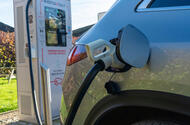 New allowances will be for retail buyers and favour UK-made cars, claims The Telegraph
New allowances will be for retail buyers and favour UK-made cars, claims The Telegraph
Grants to incentivise sales of electric cars are set to return as part of a tier system that will award bigger subsidies to UK-made vehicles, according to The Telegraph.
The report claims that £640 million in taxpayer cash will be used to fund the move as part of new plans to boost retail sales of EVs.
Official details of the fund will be fully announced on Tuesday by the government, transport secretary Heidi Alexander told The Telegraph. An extra £60m will also be announced to fund the building of more public chargers.
She said: “We do know that the high upfront purchase cost of EVs is something that people are wary about.
“I think we’ve got to be honest and say there are a lot of people out there who think that EVs are just for the very wealthiest.
“We also want to really move away from people having range anxiety to people having range awareness and knowing that they’re going to be able to make the journeys that they want to make.
“It’s right that the government thinks in the round about what we can do to tackle both of the issues, on charging and on the upfront cost of purchase.”
This echoes the previous Conservative government’s Plug-in Car Grant, which was pulled in 2022 and took £1500 off the price of a new EV, but one important difference with the new set-up is that it will incorporate a tier system, effecting the amount of grant given.
The report claims that this will favour UK-made cars, such as those manufactured at Sunderland by Nissan, which this year will begin building the new Leaf EV and next year the Juke EV.
The grant is also expected to apply only below a certain price band, meaning the most expensive and more premium EVs will not be eligible.
The news comes as car makers are struggling to hit the UK’s Zero Emission Vehicle (ZEV) mandate, which this year requires them to achieve an EV sales mix of 28% or be fined £12,000 per non-compliant vehicle. So far this year, just under 25% of all new cars sold in the UK have been fully electric.
The motor industry is concerned that EV sales are being heavily propped up by fleet sales, given the fleet sector already has incentives via benefit-in-kind tax reliefs, which is why retail customers are now set to receive support.
The grant is part of a wider move by the government to increase the appeal of EVs. On Sunday it announced Drive35, a £2.5 billion fund “supporting projects which help the transition to zero-emission vehicle manufacturing”.
This includes cash for manufacturing, R&D, jobs, upskilling and more to “help ensure the UK remains at the forefront of zero-emission vehicle development”, said the government.
Business and trade secretary Jonathan Reynolds said: “Economic growth is our number-one priority, and by funding our world-leading auto sector, we are creating the right conditions for increased investment, bringing growth, jobs and opportunities to every part of the UK.”
The announcement was welcomed by the Society of Motor Manufacturers and Traders’ chief executive, Mike Hawes, who called it “further evidence of the sector’s importance to economic growth”.
He added: “The importance of a long-term, cross-government strategy with specific measures for automotive cannot be understated, given the challenges facing the sector amid geopolitical uncertainty and fierce global competition.”
Corvette Teases Next-Level Speed With Even Wilder C8 Model
Hyundai Ioniq 9 Redefines Luxury SUVs with Bold Design, Advanced Tech, and Impressive Range
 Korean giant targets premium brands with its largest electric car yet
Korean giant targets premium brands with its largest electric car yet
The Hyundai Ioniq 9, the firm’s largest, most luxurious and longest-legged electric car yet, has gone on sale from £64,995.
This entry price makes it £20,000 cheaper than the Volvo EX90 and half that of the Mercedes-Benz EQS SUV, its closest rivals. It is the same price as the Kia EV9, its mechanical twin.
Hyundai's new flagship tops out at £77,595 in Calligraphy form, taking the brand into unprecedented territory. Deliveries will begin later this summer. This also comfortably outprices the Santa Fe to make it the most expensive Hyundai yet.
Offering up to 421bhp and a maximum range of 385 miles, the EV shares its E-GMP platform with the Ioniq 5 crossover and Ioniq 6 saloon.
The Ioniq 9 was revealed at the 2024 Los Angeles motor show, which is indicative of Hyundai's prevailing focus on the American market, where much of the car's development has taken place.
As the firm’s most overtly premium-focused model, the Ioniq 9 has a significant role to play in attracting custom to Hyundai from established upmarket brands like Audi and BMW. Design boss Simon Loasby is confident it can serve this purpose, telling Autocar that the Ioniq 9 is emblematic of Hyundai’s drastic shift in positioning and perception in recent years.
“For the amount of money you’re spending, you’re getting an incredibly premium car," he said. "People would argue that Hyundai isn’t premium, but when you see what you get, and the quality of execution and the technical content, even the [new entry EV] Inster is a premium car. Hyundai has gone from being a white goods manufacturer, as one journalist said of the Ioniq 6, to one of emotional, desirable, attractive, high-quality vehicles.”
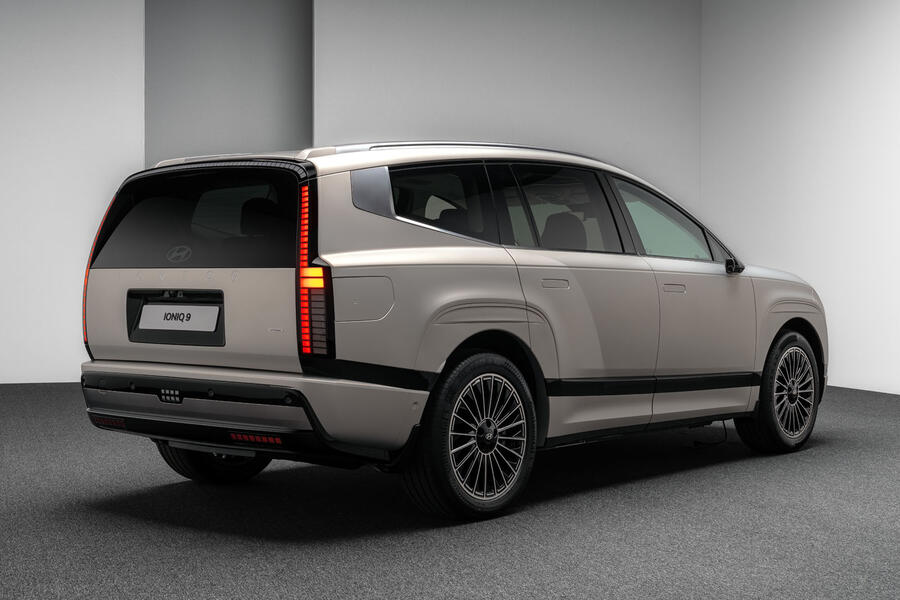
Loasby even went so far as to suggest there is potential for the Ioniq 9 to make a dent in the full-bore luxury segment. When asked if he expects even Range Rover owners to be tempted into making the switch, he said: “Absolutely. I could see a big band of people being tempted, and I can see a band of people saying absolutely not, as well. That’s okay.”
Hyundai Ioniq 9 powertrains
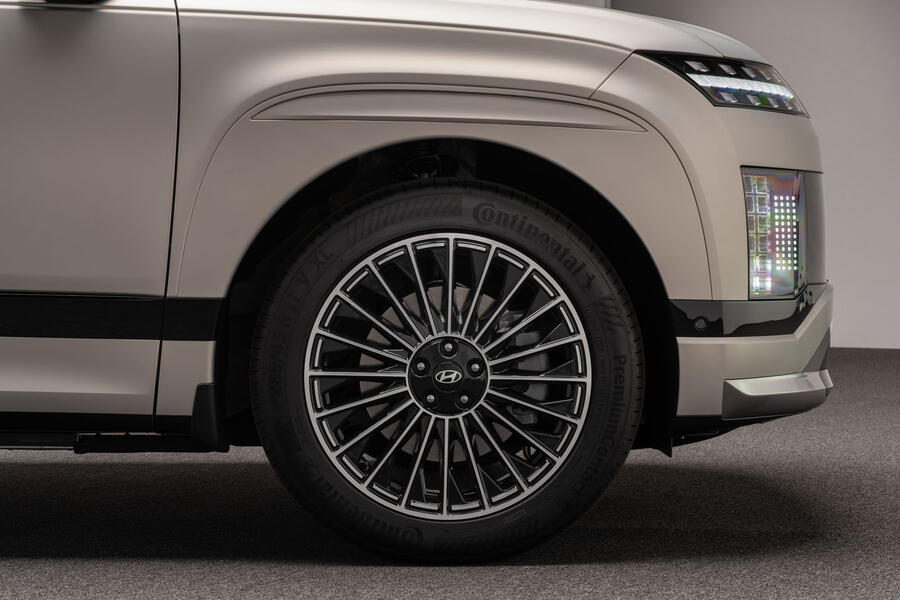
The Ioniq 9 will be available from launch with three choices of powertrain. The 215bhp, rear-driven Long Range car is the most efficient and has a claimed 385-mile maximum range figure, while the 303bhp dual-motor car returns 376 miles per charge and the top-rung 429bhp AWD Performance model manages 372 miles. They get from 0-62mph in 9.4sec, 6.7sec and 5.2sec respectively, and top out at 124mph.
As with Ioniqs 5 and 6, the large new SUV is in line for a hot N variant.
Each variant is equipped with an 800V, 110.3kWh (usable) battery. It’s rated to charge at speeds of up to 354kW, though as with other E-GMP-based EVs currently on sale, Hyundai suggests the real-world maximum will be closer to 220-230kW.
The battery can also be used to charge external devices with the 230V vehicle-to-load function, and Hyundai has made some subtle improvements to “address common EV customer concerns”, such as improving the consistency of the battery’s performance, providing more detailed energy usage information and enhancing the inbuilt EV route planner.
Other important upgrades for the Ioniq 9 are the introduction of a higher gear ratio at the rear for increased torque at lower speeds, and a two-stage power inverter that is said to improve efficiency.
Hyundai Ioniq 9 design
Hyundai refers to the Ioniq 9 as an ‘aerosthetic lounge’, coining a phrase that reflects the design team’s simultaneous focus on desirability, aerodynamic efficiency and interior refinement.
In keeping with Hyundai’s ‘chess piece’ approach to differentiating each of its models, it is only subtly visually related to its electric range-mates - chiefly through the liberal use of ‘parametric’ pixel lighting designs, which frame the tailgate and wrap around the front end, though as full-width headlights are banned in the UK, cars in this country will have two separate headlight clusters.
Loasby says its “Teutonic” silhouette (influenced by aircraft fuselages) is “not typical for an SUV”, acknowledging the similarities with traditional estate car designs - notably in the bluff rear end and relatively flat roof and window line.
Impressively for a car of this size and shape, the Ioniq 9 touts a drag coefficient of as little as 0.259 - far more slippery than its Kia sibling and Volvo rival and on a par with even some low-slung saloons. The rounded front end, minimalist surfacing and various air-channelling design elements are key contributors, but Hyundai highlights the Ioniq 9’s unusual tapered ‘boat-tail’ rear end as a defining design characteristic.
The Ioniq 9 also has a dual-motion active air flap in its undertray to manage air passing underneath – a first for Hyundai – along with new wind-cheating wheel designs and ‘hidden’ antennae to minimise obstructions.
The overhangs are minimised and the A-pillars are placed as far forward as possible for maximum cabin space in all dimensions, resulting in a 3130mm wheelbase that outstrips the Land Rover Defender 110.
Hyundai Ioniq 9 interior

Available either with seven seats or a pair of swivelling middle-row armchairs in the VIP-focused six-seater, the Ioniq 9’s cabin aims to serve as what Loasby calls a “natural lounge” – “a furnished, relaxed, caring space”, majoring on airiness and functionality.
It has the longest wheelbase of any Hyundai yet, at 3130mm, allowing it to offer highly competitive levels of leg room in all three rows – Hyundai quotes up to 2050mm for the second and third rows combined – and for the optional middle-row armchairs to fully recline.
The cockpit is familiar from the other Ioniq models, with a one-piece panoramic curved panel mounted atop the dashboard for the driver display and infotainment screens, but a healthy smattering of physical buttons and switches left in place for key controls.
The Ioniq 9’s centre console – dubbed Universal Island 2.0 – has a ‘hidden’ 12.6-litre storage cubby underneath the 5.6-litre top tray, and the whole unit slides back and forth to free up space in the front of the cabin and give rear passengers easier access.
At the back, the Ioniq 9 offers to 908 litres of boot space with the third row folded flat and 338 litres with seats up. In addition, it has one of the largest frunks of any EV in the UK, with up to 88 litres of space beneath the bonnet (or 52 litres in the AWD car).
Hyundai Ioniq 9 chassis
The Ioniq 9 has been tuned for an optimum blend of long-distance refinement and smooth, predictable handling, claims Hyundai, emphasising the lengths to which its engineers have gone to minimise weight, and touting the dynamic benefits of full torque vectoring and a new suspension system that has been “designed specifically for EVs and SUVs”.
The Ioniq 9 has multi-link suspension at each end, self-levelling twin-valve dampers to keep the body flat in corners and hydro-bushing components to reduce vibration on the move. It does not have rear steering like some other cars of this size but is expected to match the EV9’s 12.4m turning circle, which is only slightly wider than that of the much smaller Hyundai Tucson.
With sound-absorbing foam in the tyres, acoustic glass, reinforcement of key structures and an active sound control system that can “isolate noise at the source”, the Ioniq 9 has NVH levels in keeping with its premium billing, says Hyundai, and in line with some bona fide luxury cars.




